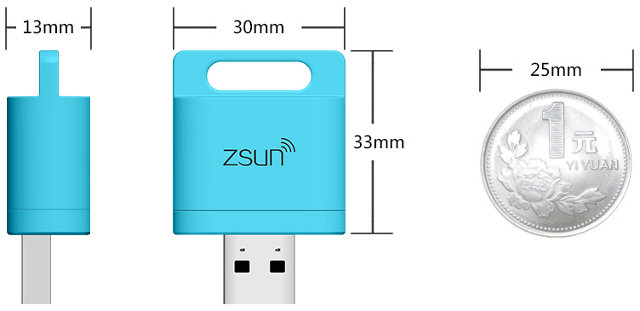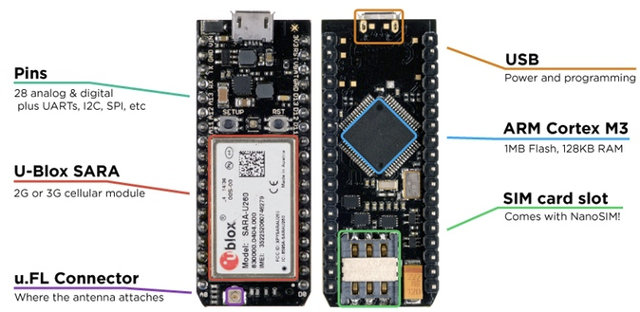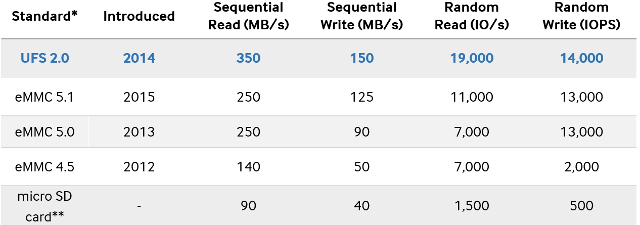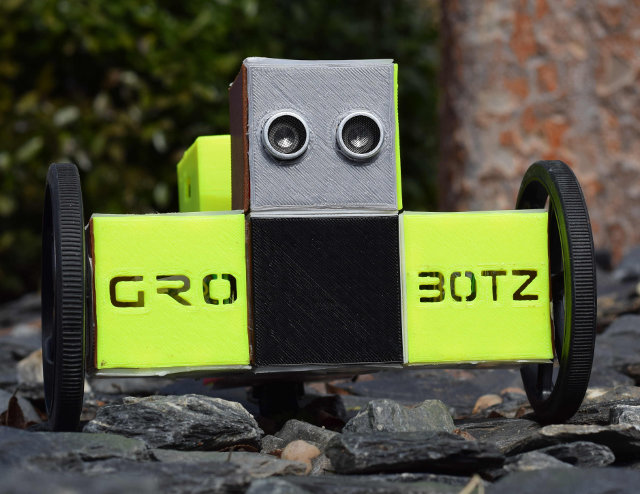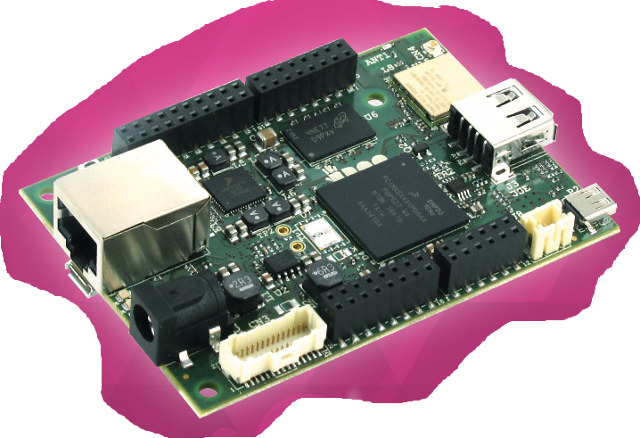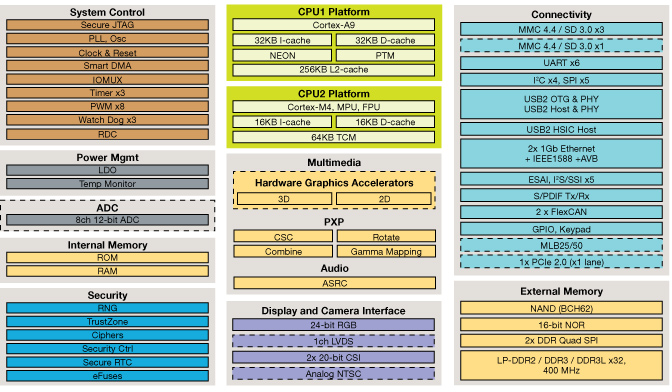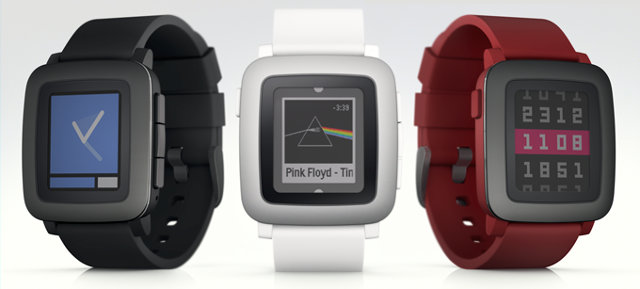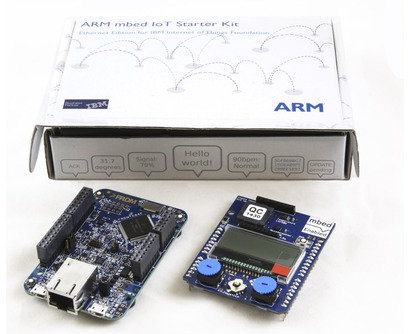I’ve previously covered Zsun SD11x USB flash drives with 8 to 128 GB internal flash, a battery, and Wi-Fi connectivity in order to easily add storage to devices without micro SD slots. The company has now launched a new Wi-Fi card reader to do the same, but with your own micro SD card instead allowing up to 64GB extra storage, and easy replacement. Zsun card reader specifications: SoC – Qualcomm Atheros AR9331 WiSoC System Memory – 256 Mbit RAM (32 MB) Storage – Internal flash for firmware (capacity TBD), micro SD slot up to 64GB Connectivity – 802.11 b/g/n Wi-Fi @ 150 Mbps USB – 1x USB 2.0 port for power and use as standard USB card reader Dimensions – 33 x 30 x 13 mm There’s no battery, so you’d have to connect the dongle to a power bank, PC, car charger etc.. to power it. If you connect […]
Spark Electron Cellular Module for M2M Projects Comes with a $3 Monthly Data Plan (Crowdfunding)
Spark IO started with Spark Core, a tiny Wi-Fi module, followed with Spark Photon is a cheaper, faster, and tinier Wi-Fi module, and now the company is launching Spark Electron to bring cellular connectivity to hobbyist projects at an affordable cost and small form factor. Spark Electron specifications: MCU – ST Micro STM32F205 ARM Cortex M3 microcontroller @ 120 MHz with 1MB Flash, 128K RAM Cellular Connectivity – U-Blox SARA U-series (3G) or G-series (2G) modem + NanoSIM card slot + u.FL connector for Antenna Headers – 36 pins with 28 GPIOs (D0-D13, A0-A13), plus TX/RX, 2 GNDs, VIN, VBAT, WKP, 3V3, RST USB – micro USB port for power and programming Misc – Setup and reset buttons, LED Dimensions – 5.08 cm x 2.03 cm x 0.76 cm (1.27 cm including headers) The board can be programmed with Wiring (Arduino’s programming language), C/C++, or ARM assembly. It’s longer than Spark […]
Samsung Introduces Faster Full-Duplex UFS 2.0 Storage for Mobile Devices
eMMC (embedded multimedia card) provides a boost in read and write performance compared to traditional NAND flash memories, let alone micro SD cards. Samsung has now announced the manufacturing of the first 32, 64, and 128GB embedded memory solution based on Universal Flash Storage (UFS) 2.0 standard delivering up to 350MB/s read speed and 150MB/s write speed, or 40% improvement in read speed over eMMC 5.1.This should help further reduce boot time, and app loading times. Moreover, while eMMC read and write operating are sequential (half-duplex), UFS 2.0 allows for full-duplex operating, meaning writing and reading can happen at the same time. UFS can achieve this feat thanks to a LVDS (Low-Voltage Differential Signaling) serial interface with dedicated read/write paths contrary to the parallel 8-bit interface used for eMMC. Combined with a Command Queue(CQ), which sorts out the commands that needs to be carried out, UFS 2.0 allows three times […]
GroBotz Interactive Robot Project is Made of Easy to Assemble Smart Blocks (Crowdfunding)
GroBotz makes me think of Lego applied to robotics. The project consists of modules such as motors, sensors, buttons, switches, or cameras that snap together in order to create a robot on wheels, games, toys, a musical instrument, or whatever idea you may have, and the hardware is then programmed using a graphical user interface. A Raspberry Pi board is used for the brain of the robot, and Microchip PIC MCUs for the smart blocks. The software is programmed in C# using Xamarin, the user interface is based on Unity, OpenCV is used for image processing, and during development a plastic part where printed with Makerbot, and schematics and PCB layout designed with CadSoft EAGLE. The company has now come up with a number of modules as shown in the picture below. Your robot can then be controlled over Wi-Fi with GroBotz app which works on Windows, Mac OS, iOs, […]
UDOO Neo Development Board is Powered by Freescale i.MX 6SoloX Processor
UDOO boards combine a Freescale i.MX6 dual or quad core processor with an external Atmel SAM3X MCU that’s programmable as an Arduino board, so as Freescale has now formally announced their i.MX 6SoloX processor with a Cortex A9 core running Linux and Android, and a Cortex M4 core running MQX real-time operating systems, it was logical that the company would soon launch a low cost development board based on this heterogeneous processor. Meet UDOO Neo. UDOO Neo board specifications: SoC – Freescale i.MX 6SoloX ARM Cortex-A9 core @ 1GHz and ARM Cortex-M4 Core with 2D/3D GPU System Memory – 512MB or 1GB DDR3 (only Plus version) Storage – On-board NOR SPI Flash, micro SD slot, 8-bit SDIO interface (on headers) Video Input/Output micro HDMI port LVDS interface + touch (I2C signals) Analog camera connection supporting NTSC and PAL 8-bit Parallel camera interface (on headers) Audio – HDMI USB – 1x […]
Freescale Announces i.MX 6SoloX ARM Cortex A9 & Cortex M4 Processor
Freescale i.MX6 SoloX processor started to show up in the ARM Linux Kernel mailing list last year, and Cortex A9 + Cortex M4 processor showed up in some marketing documents, but so far all documentation was tied to a non-diclosure agreement. However, all resources are now publicly available, as the company officially launched i.MX 6SoloX processor at Embedded World 2015. Freescale i.MX 6SoloX specifications: CPU – ARM Cortex-A9 up to 1 GHz with 512 KB L2 cache, 32 KB instruction and data caches and NEON SIMD media accelerator MCU – ARM Cortex-M4 up to 200 MHz with 16 KB instruction and data caches, 64 KB TCM, MPU and FPU Memory Interface 16/32-bit DDR3-800 and DDR3L-800, 16/32-bit LPDDR2-800 SLC/MLC NAND, 62-bit ECC, ONFI2.2 2x DDR Quad SPI NOR flash, 16/32-bit NOR Flash Display and Camera Interfaces Parallel RGB LVDS 20-bit parallel CMOS sensor interface NTSC/PAL analog video input interface Multimedia GPU […]
Pebble Time is the Color Version of the Pebble SmartWatch (Crowdfunding)
The original Pebble Watch launched on Kickstarter about 3 years ago, and after selling over 1 million watches, the company is back on Kickstarter with Pebble Time, a thinner version of the watch with an always-on color e-Paper display, a new “timeline” user interface, a microphone for voice recognition, and 7 days of battery life. The complete Pebble Time specifications are not available, but the company still listed some key features: MCU – Cortex M4 Always-on, daylight readable 64 colors e-Paper display with backlight (no touchscreen) Six-axis gyrosope Microphone for dictation 3x tactile buttons Bluetooth for connectivity with mobile devices Up to 7 day battery life Compatible with any standard 22mm watch band Water resistant and durable Silent vibrating alarms Language and international character support (Chinese coming soon) The new Timeline interface focuses on past, present and future events such as basketball score, current steps, and weather forecast, and the […]
Freescale Kinetis based Mbed IoT Starter Kit Ethernet Edition Connects to IBM IoT Cloud
ARM, IBM and Freescale have jointly announced Mbed IoT Start Kit – Ethernet Edition at Embedded World 2015 that consists of a Freescale Kinetis Cortex M4 mbed-enabled development board and a sensor IO application shield that interface with IBM Bluemix cloud platform. Freescale FRDM-K64F Freedom development board specifications: MCU – Freescale Kinetis K64 (MK64FN1M0VLL12) ARM Cortex M4 MCU @ 120 MHz with 1 MB flash memory, 256 KB RAM External Storage – SDHC slot Connectivity – 10/100M Ethernet USB – Dual role USB interface with micro-B USB connector Sensors – FXOS8700CQ accelerometer and magnetometer Headers – Arduino R3 compatible I/O connectors Misc – RGB LED, two user push buttons Power Supply – OpenSDAv2 USB, Kinetis K64 USB, and external source The board also features a programmable OpenSDAv2 debug circuit supporting the CMSIS-DAP Interface software that provides a mass storage device (MSD) flash programming interface, or a CMSIS-DAP debug interface, or […]


